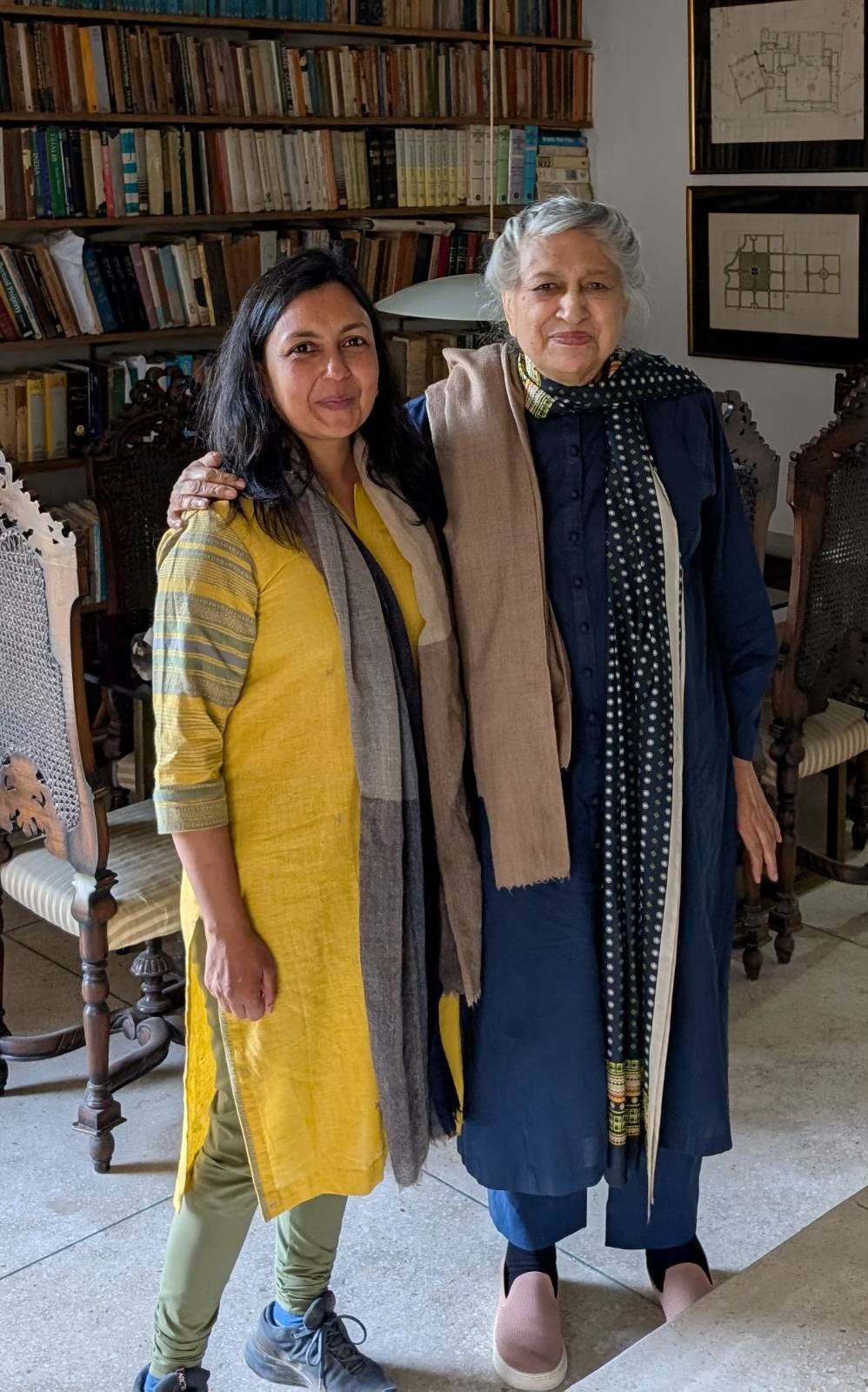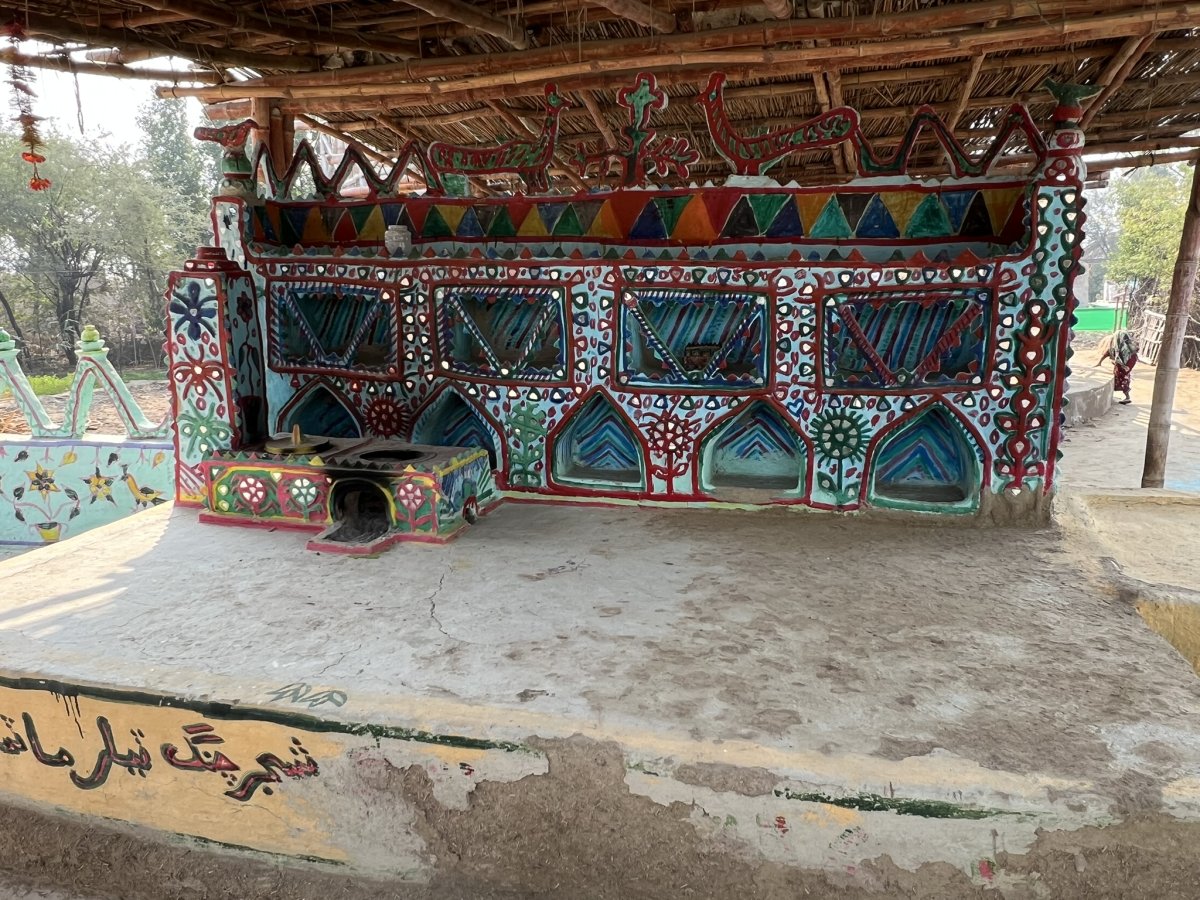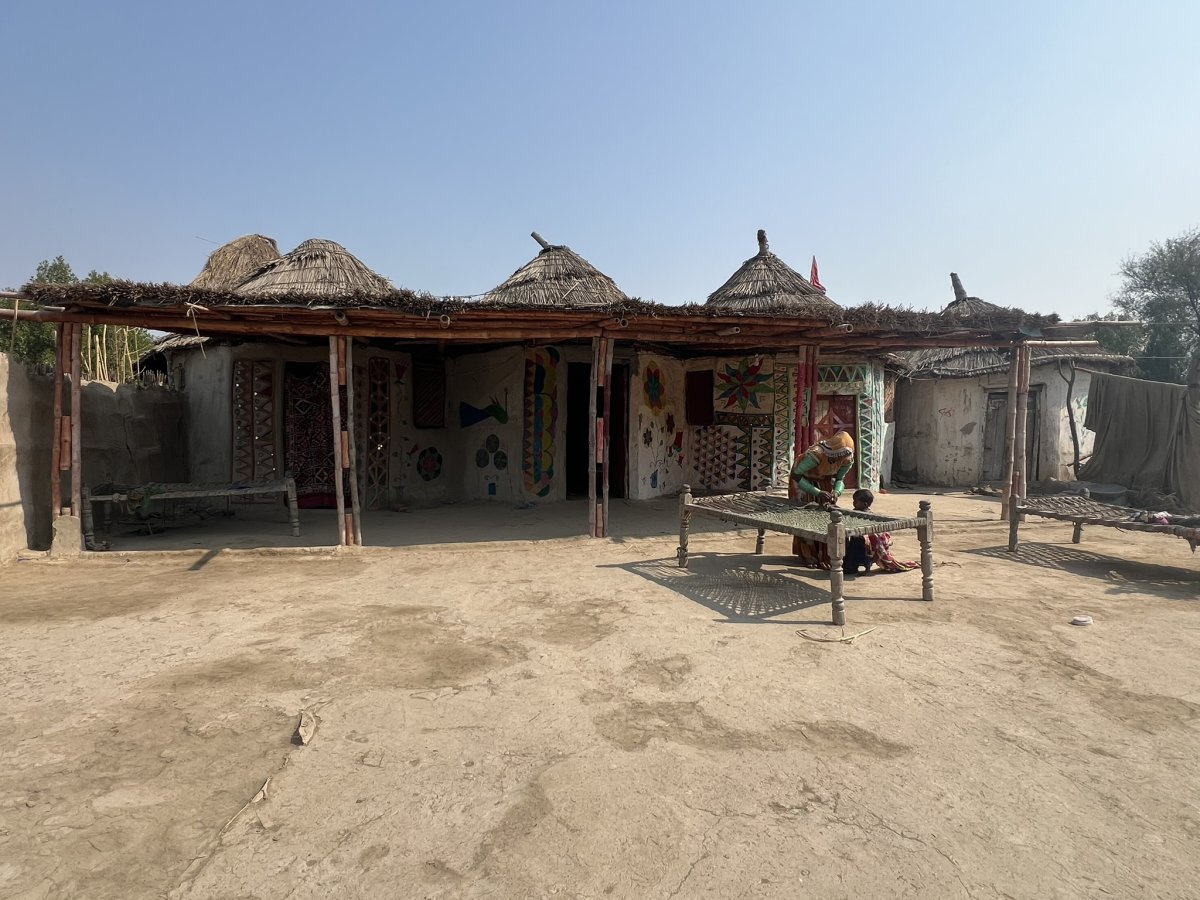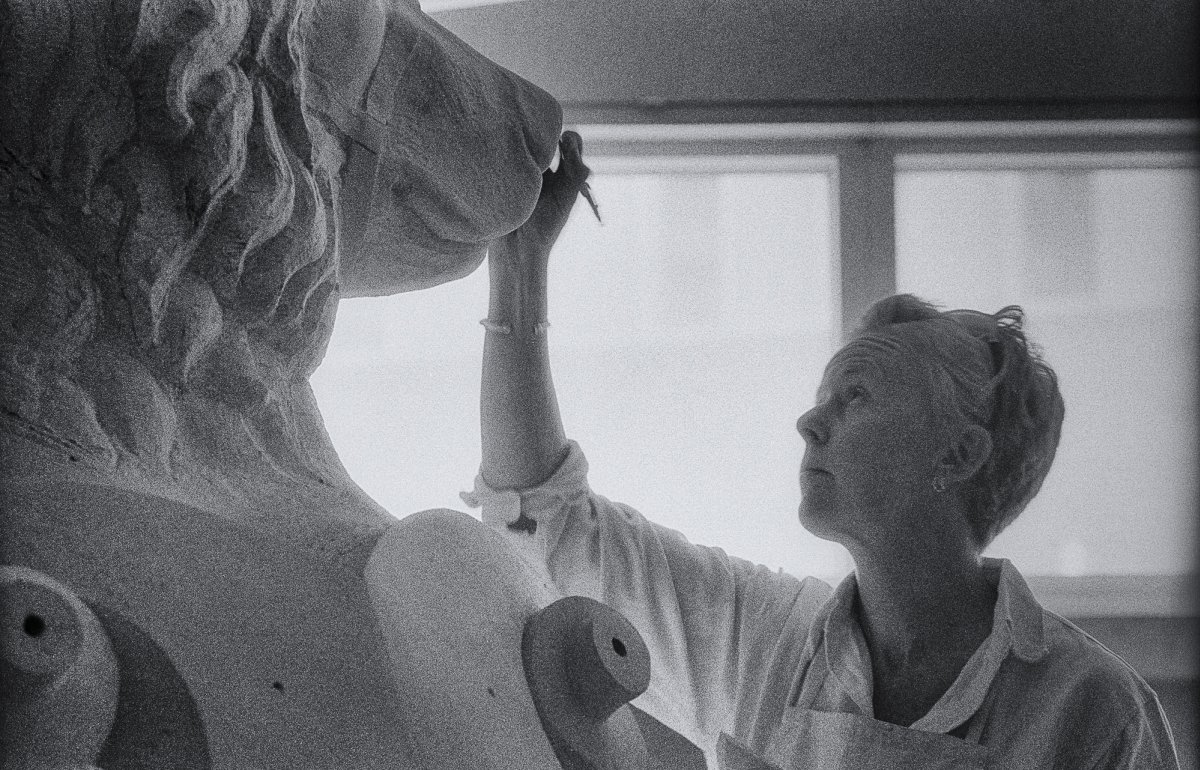
Yasmeen Lari: Architecture, Empowerment, and Conservation
Share on:
Sarika Jhawar, a 2024 SPAB Scholar, describes meeting Yasmeen Lari and learning about her uncompromising efforts to demonstrate that architecture, when harnessed as a tool for empowerment, can transform entire communities.
Yasmeen Lari, Pakistan's first female architect and the country's first registered architect, is a true pioneer. I first discovered her work in the RIBA journal, where she was featured for her efforts in building homes for those displaced by the floods in Pakistan. When I met her at an Oxford conference last year, I eagerly invited myself to Pakistan to experience her work firsthand.
Our journey began in Karachi, where Lari lives and works. Through long, insightful conversations, she gradually shared the story of her professional journey. After returning to Pakistan following her architectural education in England, Lari set up her practice and quickly realised the profession was unregulated in Pakistan. This marked one of her earliest battles—a struggle against a powerful engineers' lobby and self-proclaimed architects without formal education. Despite significant opposition, Lari succeeded in regulating the profession.

Sarika Jhawar and Yasmeen Lari at Yasmeen's home in Karachi.
Lari's passion for conservation deepened while traveling with her husband, Suhail Zaheer Khan, a writer and historian. Realising her limited knowledge of her country's historical architecture and the need for its documentation, she co-founded the Heritage Foundation of Pakistan with Suhail to preserve and record the architectural heritage of Sindh.
When asked about the challenges of working in a male-dominated industry, she humbly credits her privileged background for easing her path. Yet beneath the surface lies a different story—one of unwavering determination and deep compassion that drives her to do what is necessary and just. "Challenges arise when you take up a cause. As long as I didn't do that, I was fine." But Lari didn't want to just be fine; she was determined to face those challenges head-on.
Rethinking Shelter: A Blueprint for Resilient Communities
Most of Lari's current work focuses on the floodplains of the River Indus, where several villages were devastated by catastrophic floods. Many rural homes in Pakistan are constructed from mud and twigs—materials that are abundant, cool the interiors, and reflect traditional building techniques. However, these structures are highly vulnerable to flooding. Lari's solution reinvents traditional architecture by integrating a bamboo frame, reinforcing structures while preserving local building methods. The bamboo skeleton can be prefabricated off-site and assembled in the village, where the community completes the walls with locally available materials and skills they already possess. It's an elegant, low-cost, and sustainable approach that not only provides shelter but also keeps the community empowered by utilising their existing skills.
Chulha - stove designed by Lari. The decorations allows the women who made them to express their creativity.
We spent a couple of days in one of these villages, where we were greeted with warmth, pride, and smiles. Endless cups of chai were served from chulhas (earth stoves), a design by Lari. "A simple act of placing the chulha on a raised platform helps restore the dignity of women," Lari explained. Indeed, the pride in these stoves was evident in the beautiful decorations the women had added themselves.
Minimal Intervention, Maximum Impact and Community Engagement
Lari applies her philosophy of empowerment and support to heritage conservation. With limited funding, instead of expensive restorations, she advocates for ‘first-aid' of buildings—cleaning, stabilizing, and carrying out essential repairs – low skill jobs in which the community can easily get involved. This is the approach she adopted in the UNESCO World Heritage Site of Makli. “We don't need to wait for a lot of funds and high skills,” she says. The local beggar community was once barred from entering these monuments. "How can they take ownership if they're not even allowed inside?" Lari challenged this norm and involved them in the restoration process.
Bamboo, mud and lime shelters with thatch roofs designed by Lari at Pono Colony.
Her work in Karachi's historic quarters also exemplifies this philosophy. Once neglected and overrun with illegal constructions, these eighteenth-century streets have been pedestrianised, with trees planted and historic facades uncovered by simply relocating metal shutters. Lari's remarkable vision allows her to seamlessly integrate her projects, employing women in rural areas to craft terracotta floor tiles for the pedestrian streets in Karachi, providing them with a sustainable source of livelihood.
The Power of Women in Conservation
Lari's message to women in architectural conservation is simple: carve out your own space. She sees immense potential in the roles women can take on, particularly in engaging local communities. In Pakistan, women in rural areas are often more comfortable speaking to other women about their needs and challenges, making women's involvement in these projects not just beneficial, but essential. "We need to know what is good for us, rather than what we've been told is good for us."
“When women are empowered, a project becomes self-propelling—you don't have to do anything,” she says. And empowerment is precisely Lari's approach. She doesn't believe in charity. Instead, she believes in equipping people with the skills to build their own futures. Lari ensures that women are entrusted with significant responsibilities in her projects, empowering them to make a lasting impact. When Lari visited earthquake-affected areas, she found that the women had not had the opportunity to express their grief. Her arrival was warmly welcomed, and by helping them with crafts, the healing process began.
Floor finish in mud and cow dung being applied by home owners themselves, a skill they already had.
Beyond Architecture: A Holistic Vision
Beyond architecture, Lari's holistic approach addresses broader community needs. She is tackling food security by encouraging communities to grow their own produce. Bamboo, once sourced from markets, is now cultivated on the edges of villages, creating a self-sustaining local economy. Lari refuses help from the government, believing that any assistance from authorities or NGOs would undermine her goal of fostering community independence.
Her philosophy seamlessly integrates conservation, employment generation and community empowerment. “I have left architecture,” she often says. But this is architecture in its most profound form—designing not just buildings, but livelihoods. One million homes across 15,000 villages. It's an audacious goal, but Yasmeen Lari is not one to be deterred. She moves forward, proving that architecture, when harnessed as a tool for empowerment, can transform entire communities.
Sarika Jhawar, 2024 Scholar
Join five women working in conservation in the UK for our roundtable panel. Also available to Live Stream
Women in Conservation: a conversation, Tuesday 18 March, 5.30-8pm
Photos by Sarika Jhawar. Header image decorations in mud created by women of the village.
Portrait of Sarika Jhawar and Yasmeen Lari by Paul Crosby
Sign up for our email newsletter
Get involved




